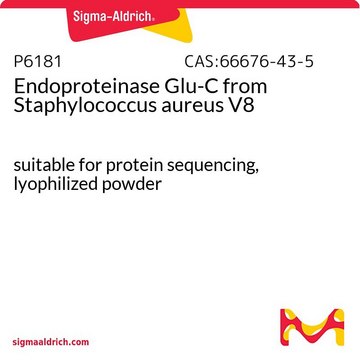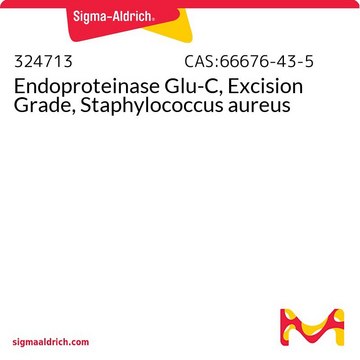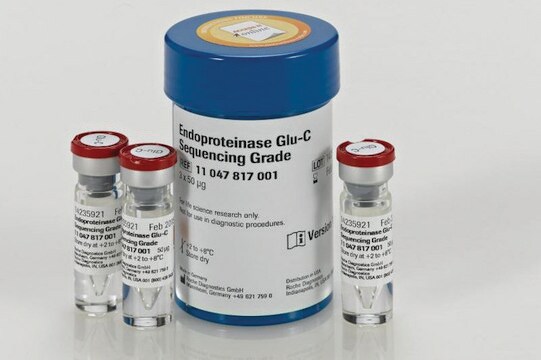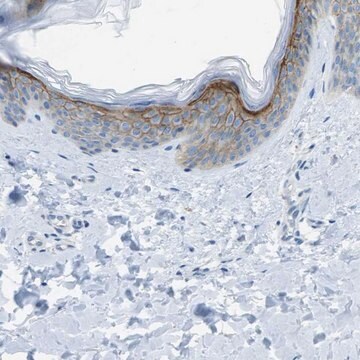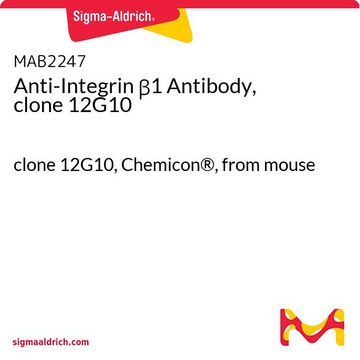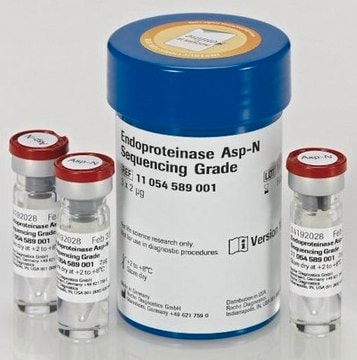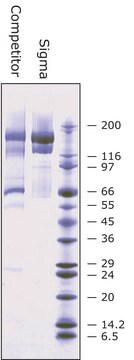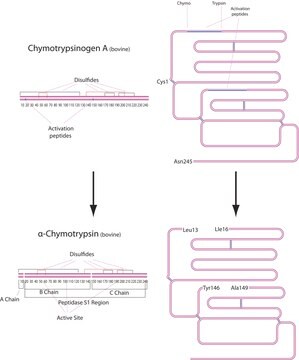Wszystkie zdjęcia(1)
Kluczowe dokumenty
10791156001
Roche
Endoproteinase Glu-C (V8 Protease)
from Staphylococcus aureus V8
Synonim(y):
V8 protease, protease v8
Zaloguj sięWyświetlanie cen organizacyjnych i kontraktowych
About This Item
Polecane produkty
Formularz
lyophilized (salt-free)
aktywność właściwa
20 U/mg
masa cząsteczkowa
30 kDa
opakowanie
pkg of 2 mg
producent / nazwa handlowa
Roche
optymalne pH
8.0-8.5
Powiązane kategorie
Opis ogólny
Approximately 20 U/mg lyophilizate at +25°C with Z-Phe-Leu-Glu-4-nitranilide as the substrate (approximately 500 U/mg lyophilizate at +37°C with casein as the substrate).
At 25 °C with Z-Phe-Leu-Glu-4-nitranilide as the substrate (approximately 500 U/mg lyophilizate at 37 °C with casein as the substrate).
Endoproteinase Glu-C is a Staphylococcal serine proteinase. Its inhibitors are DFP, α2-macroglobulin and TLCK.
Specyficzność
Heat inactivation: Endoproteinase Glu-C is inactivated by boiling for ten minutes.
Zastosowanie
Use Endoproteinase Glu-C (V8 Protease) for protein structure analysis and for sequence analysis.
Działania biochem./fizjol.
Endoproteinase Glu-C specifically hydrolyzes peptide and ester bonds at the carboxylic side of Glu, or both Glu and Asp, depending on the buffer used.
Uwaga dotycząca przygotowania
Activator: The enzyme has its maximal activity in presence of SH-reagents
Working concentration: 1 to 5 mM
Working solution: Recommended solvent is 50 mM ammonium acetate pH 4.0 (2 mg/ml).
Storage conditions (working solution): -15 to -25 °C
The enzyme (2 mg/ml in 50 mM ammonium acetate, pH 4.0) is stable for at least one month, frozen in aliquots and thawed only once.
Working concentration: 1 to 5 mM
Working solution: Recommended solvent is 50 mM ammonium acetate pH 4.0 (2 mg/ml).
Storage conditions (working solution): -15 to -25 °C
The enzyme (2 mg/ml in 50 mM ammonium acetate, pH 4.0) is stable for at least one month, frozen in aliquots and thawed only once.
Przechowywanie i stabilność
Store at 2 to 8 °C. (Store dry!)
Inne uwagi
For life science research only. Not for use in diagnostic procedures.
Ta strona może zawierać tekst przetłumaczony maszynowo.
Hasło ostrzegawcze
Danger
Zwroty wskazujące rodzaj zagrożenia
Zwroty wskazujące środki ostrożności
Klasyfikacja zagrożeń
Eye Irrit. 2 - Resp. Sens. 1 - Skin Irrit. 2 - STOT SE 3
Organy docelowe
Respiratory system
Kod klasy składowania
11 - Combustible Solids
Klasa zagrożenia wodnego (WGK)
WGK 1
Temperatura zapłonu (°F)
does not flash
Temperatura zapłonu (°C)
does not flash
Wybierz jedną z najnowszych wersji:
Masz już ten produkt?
Dokumenty związane z niedawno zakupionymi produktami zostały zamieszczone w Bibliotece dokumentów.
Klienci oglądali również te produkty
Rosalynn C Molden et al.
Current protocols in protein science, 77, 23-23 (2014-08-02)
Histones are chromatin proteins that are highly modified with many different types of post-translational modifications. These modifications act in concert to regulate a number of chromatin-related processes. However, identification and quantification of co-occurring histone post-translational modifications is challenging because there
Marion Avril et al.
PLoS pathogens, 9(6), e1003430-e1003430 (2013-07-05)
During blood stage infection, Plasmodium falciparum infected erythrocytes (IE) bind to host blood vessels. This virulence determinant enables parasites to evade spleen-dependent killing mechanisms, but paradoxically in some cases may reduce parasite fitness by killing the host. Adhesion of infected
Tianshi Wang et al.
Molecular cell, 75(4), 823-834 (2019-07-16)
Sirt3, as a major mitochondrial nicotinamide adenine dinucleotide (NAD)-dependent deacetylase, is required for mitochondrial metabolic adaption to various stresses. However, how to regulate Sirt3 activity responding to metabolic stress remains largely unknown. Here, we report Sirt3 as a SUMOylated protein in
Nasz zespół naukowców ma doświadczenie we wszystkich obszarach badań, w tym w naukach przyrodniczych, materiałoznawstwie, syntezie chemicznej, chromatografii, analityce i wielu innych dziedzinach.
Skontaktuj się z zespołem ds. pomocy technicznej